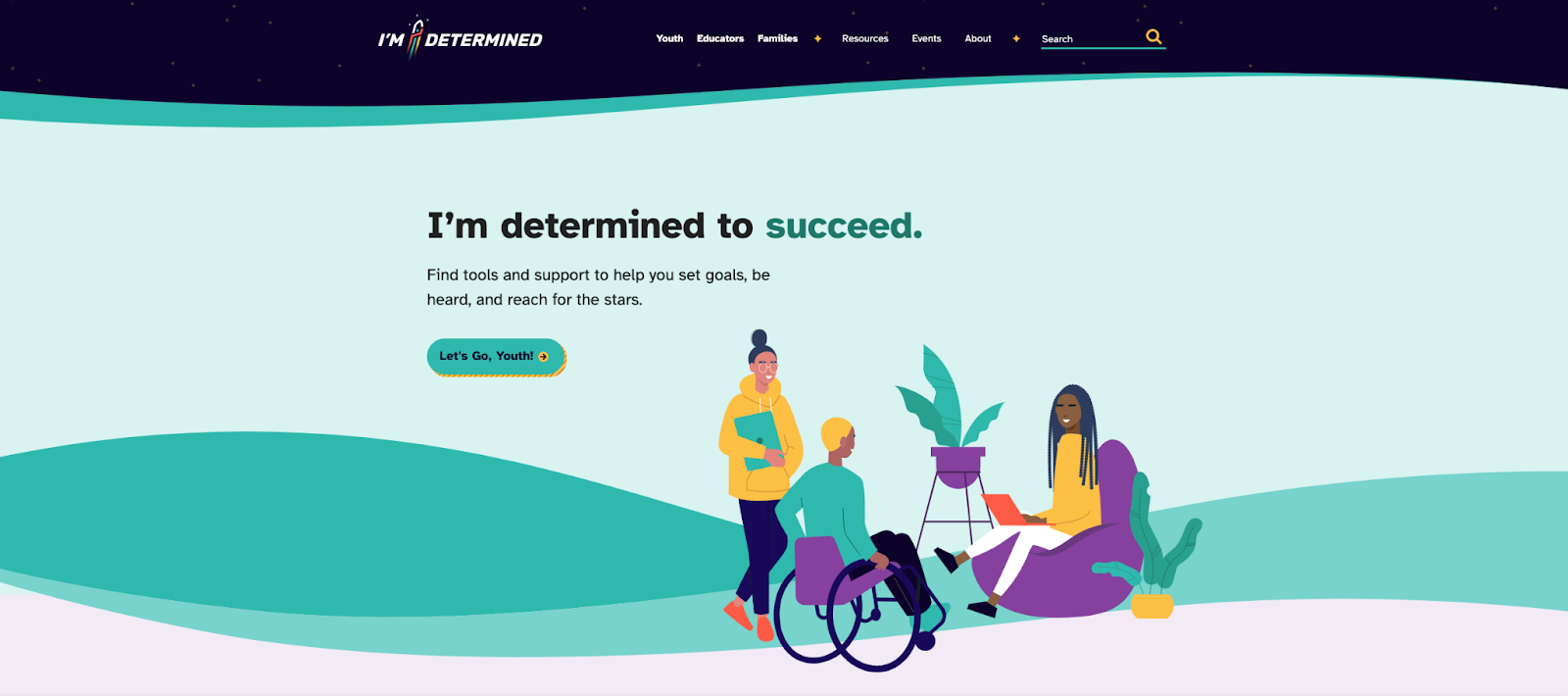Blog Insights
Accessibility Goals: Moving Past Compliance
It can be uncomfortable to admit, but many web designers, myself included, first learned about digital accessibility as a regulation. And so, we approached it that way: Is this website “compliant”? Can a screen reader process this content? Is this color choice ok, or out of bounds? How do we budget for required accessibility?
More and more, I can feel a shift away from this mindset. Within Forum One, and among the mission-driven organizations we work with, I sense that more people understand that accessibility isn’t a box to check, but rather an integrated part of project design and delivery. It’s not a way to design—it’s simply design.
Perhaps the dramatic changes to work and home life brought on by the pandemic sparked a greater understanding of accessibility. Once everyone had to rely on digital products and services in entirely new ways, a collective realization spread that if we rely on technology and that technology fails, we can’t do our jobs. We can’t access information. We can’t connect. We can’t contribute. Maybe that made a whole new set of people more empathetic to the idea of accessibility.
Whatever the reasons, the number of people who are now listening, learning, and understanding the necessity of comprehensive accessibility—which people with disabilities have been calling for for decades—is both welcome and long overdue.
There are several ways we approach accessibility at Forum One that all organizations, of any size, can adopt or adapt.
Shifting responsibility: A team approach to accessibility
The “checkbox” approach to accessibility rested on the idea that someone—usually a developer —managed accessibility and had the power to make a website accessible or not accessible. We understand now that everyone has a role to play.
At Forum One, we have created a cross-disciplinary internal working group on accessibility. With representatives from a number of departments, we assess the landscape of work we are doing now, identify where there might be gaps, and determine what should be streamlined and improved within our process.
This takes our approach out of a project-by-project mindset, and also challenges us to look internally. Web accessibility isn’t just about ensuring a public-facing website is accessible, but also intranets, internal digital tools, documents, videos, processes, and the information people need to do their jobs. Within our own systems, how we are honoring our intentions and being more accessible? That practice makes it second nature to bring the same approach into client work.
Shifting timelines: Inclusion begins in the planning stages
If we think about accessibility as a final step or compliance check, we’re way too late. Recently we’ve been able to do the opposite—prioritize inclusion from the planning stages—and the results are dramatic.
With the Virginia Department of Education’s I’m Determined initiative, we brought in key audiences at a discovery and design phase, much earlier than traditional audience testing would take place.

I’m Determined provides tools that help young people, especially those with disabilities, to undertake a measure of control in their lives. In alignment with this mission, we were able to meet and work with youth with disabilities, educators, and families, to help define user needs and design appropriate solutions.
Because the process was more inclusive, the website we developed better-addressed audience needs. When the website launched, we knew it had a stronger foundation. We also knew we could continue to iterate. Having active participation from and a relationship with the key audience means we can stay open to feedback and continuously improve.
Shifting expectations: Accessibility is a journey
Despite increased understanding, accessibility can still feel daunting for many organizations. Understanding accessibility as a journey, not a one-size-fits-all solution, is one way to ease anxiety.
Organizations can keep several tips in mind as they consider accessibility approaches:
1. List accessibility as a requirement in your Request for Proposals (RFP)
Say that you’d like to meet “a minimum of 2.0 AA compliance and incorporate best practices for accessibility.” Then work with your vendor to figure out exactly what that means and how you’ll get there.
2. Understand that there’s no such thing as a 100% accessible or a perfect solution.
A willingness to start, learn, and make iterative improvements on accessibility is a more valuable approach than striving for perfection.
3. Invest in audience research and usability studies that include people with disabilities
The best way to measure how you’re doing and what problems need solving is by asking real people. The more inclusive the process, the more accessible the outcome will be.
4. Focus on content
Accessibility isn’t only about design and technology! Well-written, well-structured content is one of the best things an organization can do to improve accessibility. (Read about this and other tips in this post).
The future: Accessibility as the norm
Along with pandemic-driven changes, the movement toward workplace decisions that prioritize diversity, equity, and inclusion (DEI) has increased attention to the vital role of accessibility. Diversity and equity require that we recognize and actively work to remove the gaps and disadvantages that people with disabilities disproportionately face. Inclusivity and accessibility require that people with different disabilities are equal contributors, are part of the conversations, and are able to participate.
Many organizations, including Forum One, have shifted from talking about DEI to talking about DEIA (A for accessibility). Making the commitment to accessibility explicit reflects our goals of ensuring accessibility considerations are embedded in every step of the work we do.
Ultimately, very soon, I think accessibility will simply become ingrained as a default approach. We’re on our way! These shifts in mindsets lead us toward a future where organizations won’t consider a final product complete unless it’s accessible to all audiences.